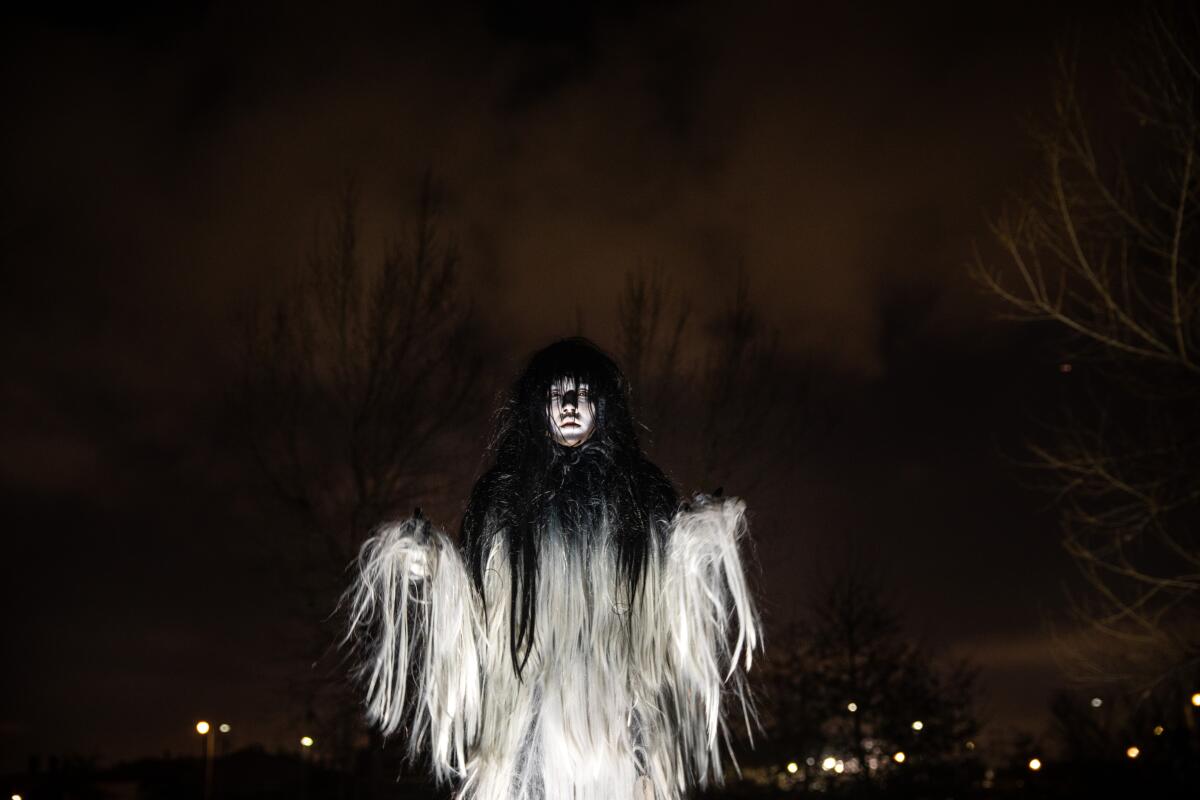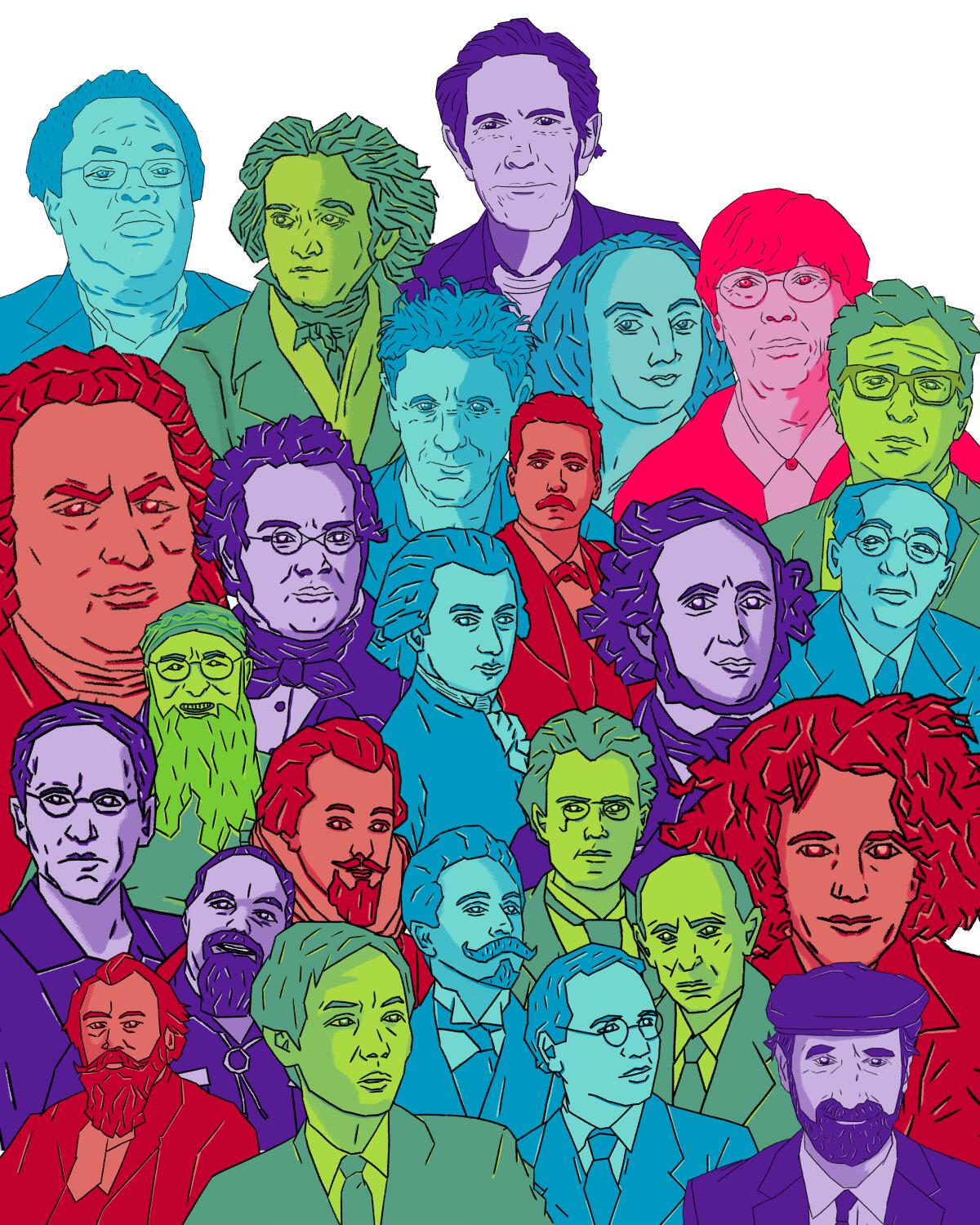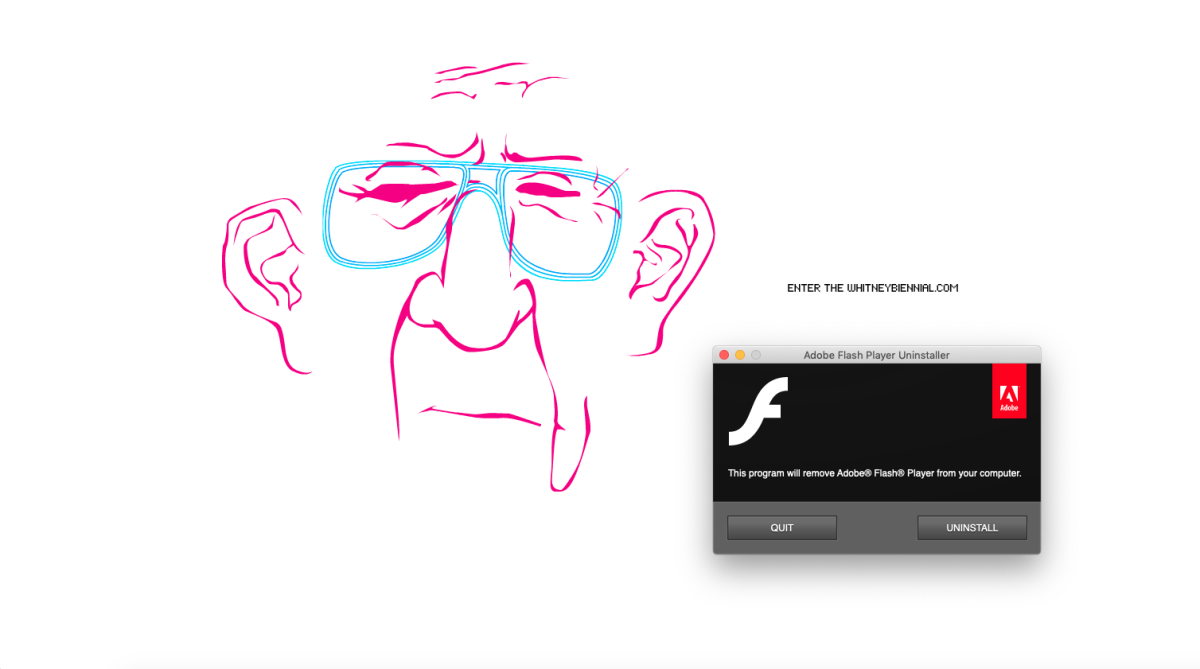Newsletter: Essential Arts: Facing 2021 with 0 predictions and 1 poem

- Share via
Did the ground move? Did the Earth shake? Does everything feel different now that it’s 2021? Or are you still searching for your mask along with your car keys? I’m culture columnist Carolina A. Miranda with the official beginning-of-the year essential arts news:
Peering into 2021
In recent days, I’ve been entertaining myself by reading the various predictions for 2020 published at the beginning of last year. Writers, scholars, critics and self-described futurists forecast the rise of “statement doorknobs,” hot pants and “smart” eyewear, as well as the decline of social media (LOL) and a growing political apathy among young people (ROFL). No one foresaw a global pandemic cross-pollinated by intense protests in the name of Black lives. Go figure.
Times opinion columnist Robin Abcarian, however, did pretty much nail 2020 when it came to electoral politics, rounding out her predictions dispatch with this observation: “Between now and the election, our long national nervous breakdown will continue.” Even post-election, the breakdown continues. In fact, just consider me broken down.

So for 2021, instead of focusing on predictions, I think I’ll stick to poetry.
A few months ago, I laid my hands on a copy of “Marginal Equity,” a new book-length poem by Kade L. Twist. He’s an L.A.-based artist who teaches at the Otis College of Art and Design and is part of Postcommodity, a collective that once very dramatically bisected the U.S.-Mexico border with a 2-mile long balloon installation titled “Repellent Fence.”
“Marginal Equity,” I will confess, has sat on my desk for weeks as I’ve tangled with other deadlines. But in recent days, I’ve been absorbed by its words and the worlds they conjure.
Make the most of L.A.
Get our guide to events and happenings in the SoCal arts scene. In your inbox every Monday and Friday morning.
You may occasionally receive promotional content from the Los Angeles Times.
The book‘s form lampoons the sort of proposal that a government entity might demand of a vendor or that an arts institution might ask of an independent curator. Sections bear bureaucratic titles like “project abstract” and “proposed project activities and deliverables.” Another section is titled, plainly enough, “budget.”
But those boring headers are a MacGuffin. The poem, with biting, acid wit, struggles to reconcile indigenous self-determination and the teachings of ancestors (Twist is an enrolled member of the Cherokee Nation) with inhabiting a system of neoliberal capitalism that devours everything in its path.
It is with a few of Twist’s words ringing in my head that I face 2021:
(alternate take:
the nature of circular time
and various things)
the future
and present
are connected
by a series
of hangovers
and a series
of misappr
opriated
opportun
ities
we reach
for things
and pray
they will bring
hope
You can find “Marginal Equity” via Publication Studio. By all means, read the rest of the poem.
Plays and players
Times theater critic Charles McNulty looks forward in a thoughtful essay that examines how theater might emerge post-pandemic. He says it’s time to rethink a theater diet centered on crass commercial fare and already overplayed white male playwrights. “In the theater of the not-so-distant future, companies that place artistic imperatives over institutional obligations will be better situated to reach new audiences,” he writes. “If this means fewer offerings of higher quality, I think the trade-off will be welcome.”

Ashley Lee looks at how theater has historically shaped television and film, whether it’s the actors that travel back and forth between the screen and the stage, or the writers, directors and producers that emerged from the world of theater to produce filmed works such as “The Crown,” “P-Valley,” “Ma Rainey’s Black Bottom” and “The Boys in the Band.” Now, it’s time for the entertainment industry to step up to support theater, she writes. “If Hollywood is going to continue reaping the creative benefits of the theater ... it bears an obligation, artistic and moral, to assist the theater in its time of need.”
Critic Soraya Nadia McDonald at the Undefeated says it’s time to launch a new Federal Theatre Project, the Depression-era program that directly employed theater artists to create new works. It’s time for Congress, the White House and the country, she writes, “to see performing artists as workers.”
Hyperallergic recalls the Comprehensive Employment and Training Act of the 1970s, which employed artists in a variety of ways. Example: Senga Nengudi‘s important 1978 installation and performance, “Ceremony for Freeway Fets,” which took place underneath a freeway overpass in downtown L.A., was funded by CETA.
Enjoying this newsletter? Consider subscribing to the Los Angeles Times
Your support helps us deliver the news that matters most. Become a subscriber.
“Slave Play” playwright Jeremy O. Harris wants to continue to see theater “that’s challenging, that’s scary, that probably wouldn’t get support otherwise” — so he is personally funding it. “Theater,” he says, “is this amazing mutating beast that doesn’t hide when things get tough.”
TikTok users collectively wrote a musical inspired by the animated film “Ratatouille.” Now a group of seasoned Broadway actors is performing it.
Classical notes
To see us into the New Year, classical music critic Mark Swed has selected “Sun Rings” by Terry Riley and the Kronos Quartet for his series on listening. The work, he writes, “asks us to listen to messages from the solar system that could help us heal our pandemic-plagued and climate-changed Earth.” The composition began as a modest commission for NASA, but over time “became an “evening-length project.” Its 10 movements, writes Swed, “are a kind of mythical voyage.”
Riley’s space-inspired work — one that makes the Earth feel very small — concludes Swed’s “How to Listen” series. In a final essay, he reflects on what he has learned in the process of re-engaging these musical works, which included compositions by Brahms, John Cage, George Lewis and Pauline Oliveros. “There was no preconceived notion that they would serve as a kind of diary of the pandemic mind-set,” Swed writes, “although ‘How to Listen’ might be read that way.”

“How to Listen” has taught me a lot. I personally suggest downloading Machaut’s “Notre Dame” (which Swed recommended back in July). Then, light all the candles, turn off all the lights and take a ridiculously long bath or hot shower as you blast this incredible 14th century Mass. I promise you’ll feel reborn when you’re done.
Sort of related: how the pandemic taught one artist to love the livestream and how an $8 part from Walmart made it safe for choirs to sing again.
Looking back at 2020
On Dec. 31, Adobe suspended support for its Flash animation program, making it impossible to access on the average browser. The end of the program, which was popular with artists in the early days of net art, concluded an era of “oddball creativity” on the internet, in the words of art conservator Ben Fino-Radin. I spent the last few days of 2020 checking out some of these old sites, and as I note in my story: Flash “aesthetics mark a time when the internet felt fresh and subversive.”
Programmer Mike Davidson also has a good essay on the end of Flash. That it was developed and maintained by a single company allowed Flash to “evolve more quickly for a while,” he notes, but this was also its death knell: “Long-term, we never want single companies — no matter who they may be — controlling the very building blocks of the web.”

Times contributor Matt Stromberg examines how “deaccession” became the museum buzzword of 2020. “In April, the Assn. of Art Museum Directors approved a resolution specifying it would not censure museums that use funds raised from deaccessioning toward general operating expenses or collection care,” he wrote. “A string of high-profile auctions followed, as did questions about whether some institutions were using the pandemic as an excuse to sell off works to correct long-running budget woes.”
Architecture has been reshaped by the pandemic. (So. Much. Plexiglas.) Design contributor Sam Lubell looks back at some of the most creative COVID-19 design solutions of the year, including a Polish park that was able to mark social distancing sites with a simple pattern mowed into the grass and the Mississippi town that turned a street into a recreation area with colorful paint.
Architecture critics Mark Lamster and Alexandra Lange’s annual architecture and design awards are out! LACMA and SoFi Stadium make special appearances. As does (more important) my dear, departed chullo-wearing pit bull.
Staff writer Daniel Hernandez rounds up the year’s top Latino moments in media. Remember the Super Bowl? And “American Dirt”? But also Pedro Pascal and TikTok star Nathan Apodaca and Bad Bunny? It has been QUITE A YEAR.
Times editors have put together a great photo essay of the best portraits of artists and entertainers as captured by our incredible photographers throughout 2020.
Apropos of nothing: On Christmas Eve, I was watching “Die Hard” — as one does on Christmas Eve (because “Die Hard” is a Christmas movie). And Michael Bierut reminded me of this terrific essay by Geoff Manaugh called “Nakatomi Space.” A great riff on space and design and architecture. Yippie kay yay, 2020. Yippie kay yay.
Essential happenings
If for some reason you want to hang onto 2020, Matt Cooper has all the virtual New Year’s Eve parties that took place, including events hosted by Matthew McConaughey, John Legend, Steve Aoki and Cardi B. Okurrrr!!!
Passages
Art critic Barbara Rose, whose writings tracked the rise of minimalism, has died at age 84. In 2019, she talked very frankly about her various marriages — including to painter Frank Stella and songwriter Jerry Leiber — to the Cut. It makes for spectacular reading.
John Outterbridge, an important Los Angeles assemblage artist known for breathing new life into discarded materials, and a former director of the Watts Towers Arts Center, has died at age 87.

Luigi Snozzi, a Swiss architect who was known for creating poetic forms in exposed concrete and who was considered a leader of the Ticinese school of architecture, has died of COVID-19-related complications at age 88.
Roger Berlind, a Tony Award-winning producer who had his hands in hits such as “Sophisticated Ladies” and star-studded revivals of “Death of a Salesman” and “Hello Dolly,” has died at age 90.
Rebecca Luker, a Tony-nominated performer with a “golden voice,” known for her turns in classics like “Showboat” and “Mary Poppins,” is dead at age 59.
Ed Krieger, a photographer known for capturing the action on the stages of L.A.’s many small theaters, has died at age 73.
Ivry Gitlis, a violinist with a wildly prolific career in classical music that included performances with philharmonics and the Rolling Stones, is dead at age 98.
In other news
— New York City’s Penn Station has been expanded with a new daylight-soaked concourse, Moynihan Station, which was designed by SOM and features art installations by Kehinde Wiley, Stan Douglas and Elmgreen & Dragset. (They must not have any female artists in New York.)
— The new station has issues, but “New York finally — or once again — has a camera-ready set that proclaims the city’s long-term faith in rail,” writes architecture critic Justin Davidson.
— Kriston Capps picks apart a federal order to make civic buildings “beautiful” again. Even if Biden immediately revokes it, the order could have a long-term impact since Trump has been stuffing various cultural commissions with his cronies.
— My colleague Sonaiya Kelley has a great piece about the sources of inspiration for Pixar’s “Soul,” including the architecture of 20th century World Fairs.
— Jenna Wortham has an interesting essay about the meme-ification of Breonna Taylor.
— How museums were a strategic part of the public relations strategy for the Sackler family, the founders of Purdue Pharma, the makers of OxyContin.
— How the COVID relief bill leaves most museums high and dry.
— For the kids: LACMA has coloring sheetings inspired by Art Nouveau posters in its collection.
And last but not least ...
Happy New Year, everyone! Stay healthy. And stay safe. And may the only drama we face in 2021 be Facebook beef rendered as an R&B tune on TikTok.
The biggest entertainment stories
Get our big stories about Hollywood, film, television, music, arts, culture and more right in your inbox as soon as they publish.
You may occasionally receive promotional content from the Los Angeles Times.




